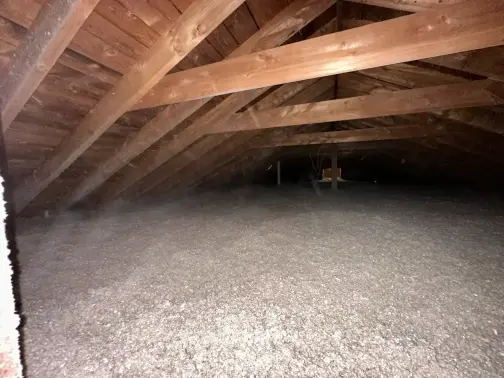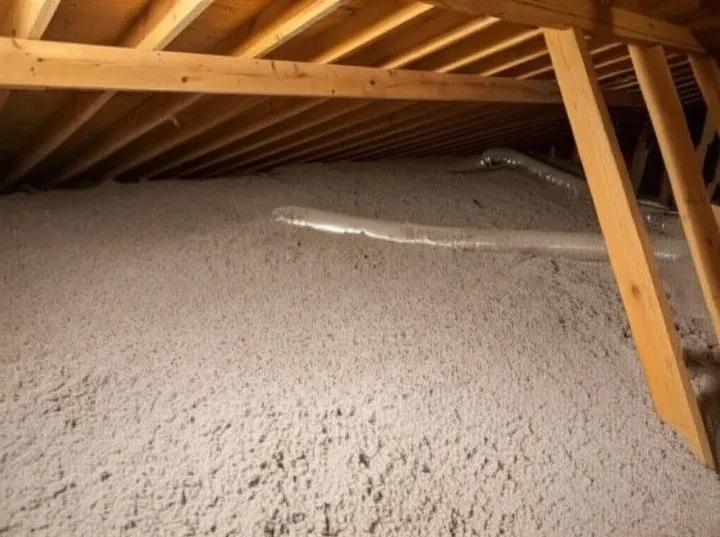Protect Your Home from Drafts with Blown-In Cellulose

Drafts in homes cause significant energy loss, contribute to uneven room temperatures, and increase monthly utility bills. Blown-in cellulose insulation provides a direct and highly effective solution by sealing hidden gaps, enhancing overall energy efficiency, and ensuring a more stable indoor climate. This dense, eco-friendly material fills even the smallest cavities, reducing air leaks far more efficiently than many traditional insulation methods. It acts not only as a thermal barrier but also as a shield against unwanted moisture intrusion and airborne noise transfer.
Blown-in cellulose offers homeowners a cost-effective, durable way to address persistent drafts, with installation flexibility suited for both new constructions and existing structures. Whether targeting attics, wall cavities, or crawl spaces, this insulation adapts seamlessly to irregularly shaped areas. This guide explores all essential aspects of using blown-in cellulose to protect your home, with detailed comparisons, technical specifications, important considerations, and practical decision-making tips.
Understanding Blown-In Cellulose Insulation
Blown-in cellulose is a type of loose-fill insulation primarily made from recycled newspaper fibers that are treated with fire retardants. Using a specialized blowing machine, the material is pneumatically injected into wall cavities, attics, and floor systems, creating a dense, seamless thermal barrier that blocks air movement. Its composition and application method allow it to conform perfectly around pipes, wiring, and other obstructions within building assemblies.
Key Features
- Composed of up to 85% post-consumer recycled content
- Treated to resist combustion, mold growth, and insect infestation
- High material density improves thermal resistance and air sealing
- Flexible application: effective in attics, walls, floors, and hard-to-reach spaces
- Suitable for retrofitting older homes as well as insulating new buildings
- Reduces external noise transmission significantly
- Improves overall indoor comfort and indoor air quality by reducing drafts
Bonus Tip: Always opt for cellulose treated with all-borate formulas, which offer superior pest and mold resistance compared to ammonium sulfate-treated products.
Technical Specifications
| Feature | Specification |
| Material Composition | 70-85% recycled newspaper treated with borate compounds |
| R-Value per inch | 3.2 to 3.8 |
| Fire Resistance | Meets or exceeds Class I fire rating standards |
| Density | 1.5 to 3.5 pounds per cubic foot |
| Moisture Control | Moderate; hygroscopic but dries naturally |
| Settling Rate | Up to 20% post-installation; compensated during application |
| Sound Attenuation | High; effective for acoustic control |
| Vapor Permeability | Semi-permeable, enhancing drying potential |
Comparison with Other Insulation Types
| Insulation Type | Material Base | R-Value per Inch | Air Sealing Ability | Eco-Friendliness | Cost Effectiveness | Fire Resistance |
| Blown-In Cellulose | Recycled paper | 3.2-3.8 | Excellent | High | High | High |
| Fiberglass Batts | Glass fibers | 2.9-3.8 | Poor | Moderate | High | Moderate |
| Spray Foam | Polyurethane | 6.0-7.0 | Excellent | Low | Low | High |
| Mineral Wool | Rock or slag fibers | 3.0-3.3 | Good | Moderate | Moderate | High |
Bonus Tip: If selecting between cellulose and fiberglass, prioritize cellulose in older homes for better draft sealing performance and ease of installation into irregular cavities.
Benefits of Blown-In Cellulose for Draft Prevention
- Superior Air Sealing: Dense fibers flow into tight cracks, blocking airflow more effectively than batt or board insulation.
- Energy Savings: Homeowners typically see heating and cooling cost reductions of 20% to 30%, depending on climate and building structure.
- Sound Dampening: Blown-in cellulose dramatically minimizes noise infiltration, creating a quieter indoor environment.
- Environmentally Responsible: Its high recycled content and low embodied energy contribute to sustainable building practices.
- Fire Resistance: Treated fibers resist ignition and slow flame spread, enhancing fire safety.
- Non-Toxic Treatment: Borate additives are safe for indoor environments and provide long-term pest protection.
- Moisture Management: Cellulose can absorb and safely release moisture without losing insulating properties, helping maintain wall health.
Bonus Tip: Layering cellulose over a base of older insulation can optimize performance without costly full removals.
Things to Consider Before Making a Decision
- Existing Insulation Conditions: Inspect for water damage, mold, or pest infestation before adding new cellulose.
- Humidity and Moisture Levels: Homes in humid climates may need vapor retarders or additional ventilation.
- Wall and Roof Construction Type: Dense-pack requirements vary; consult specifications for wood-frame versus masonry walls.
- Installation Expertise: Certified professional installers use calibrated blowing machines to ensure consistent density and avoid voids.
- Energy Efficiency Objectives: Homes targeting net-zero energy often combine cellulose with air-sealing membranes or rigid foam exterior layers.
- Building Codes and Standards: Verify compliance with local energy codes, particularly those relating to fire protection and vapor barriers.
- Climate Considerations: In cold climates, insulation should be installed with attention to moisture control to prevent condensation inside walls.
Bonus Tip: Pair blown-in cellulose with attic air sealing strategies to further enhance draft prevention and maximize return on investment.
Common Questions about Blown-In Cellulose
How long does blown-in cellulose insulation last?
Properly installed and maintained cellulose insulation can last 30 years or longer without significant performance degradation.
Can I install blown-in cellulose myself?
DIY installation is possible, particularly in open attic spaces. However, achieving proper wall cavity fill and density typically requires professional equipment and expertise.
Does blown-in cellulose settle over time?
A modest amount of settling (up to 20%) occurs naturally. Installers account for this by applying material above intended levels during installation.
Is blown-in cellulose fire safe?
Yes. Cellulose treated with borate compounds meets stringent Class I fire rating standards, slowing flame spread and reducing smoke development.
Will cellulose insulation control pests?
Borate treatments discourage insects and rodents, but complete pest exclusion still depends on integrated home sealing and maintenance strategies.
How does cellulose impact indoor air quality?
By reducing air leakage and filtering dust particles, cellulose contributes to improved indoor air quality when installed correctly.
Protect Your Home from Drafts with Blown-In Cellulose FAQ
What is the best location to install blown-in cellulose?
Ideal installation locations include uninsulated or under-insulated attics, exterior walls, and floors over unconditioned basements or crawl spaces.
How much does blown-in cellulose insulation cost?
Costs vary but generally range from $1.00 to $2.80 per square foot installed. Factors include regional labor rates, accessibility, and total project size.
How does cellulose compare to spray foam in draft sealing?
Spray foam provides absolute air sealing but is significantly more expensive. Blown-in cellulose achieves high levels of air tightness at a fraction of the cost, making it a better fit for most budget-conscious upgrades.
What maintenance does cellulose insulation require?
Minimal maintenance is needed. It’s wise to check for roof leaks or signs of moisture intrusion annually, particularly after severe weather.
Can blown-in cellulose help reduce noise?
Yes. Its dense structure significantly dampens sound transmission, providing quieter, more comfortable living spaces.
How does cellulose insulation react to moisture?
Cellulose can absorb minor moisture without losing effectiveness and will dry naturally in most assemblies. Persistent leaks must be addressed to prevent long-term problems.
Make the Right Decision
Blown-in cellulose insulation stands out as an environmentally conscious, durable, and highly effective method to protect your home from drafts. It improves thermal efficiency, promotes a quieter and more comfortable indoor environment, and aligns with sustainable construction practices. Before proceeding, carefully evaluate your home’s structure, regional climate, moisture control needs, and long-term energy goals. Engaging qualified installers ensures optimal application density and performance, delivering durable, lasting benefits that enhance comfort and reduce utility bills for decades to come.











